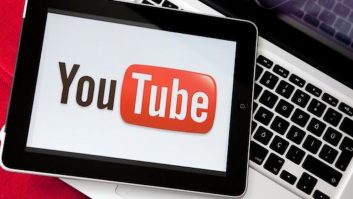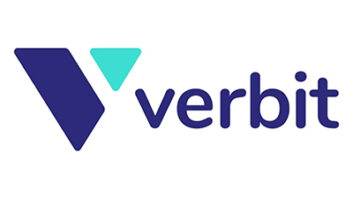Broadcast productions all start the same way, a script, the creative eye of the director, the talent and the lens to capture the footage. But what happens from that point on, from post production through to distribution, is an ever-evolving challenge.
The proliferation of Streaming Video on Demand (SVoD) Services has caused a huge shift in the way we consume content. According to the Ofcom – Media Nations Report 2020, SVoD services such as Netflix, Amazon Prime Video and Disney Plus saw the greatest growth in consumption in the UK, with people viewing an average of 1 hour 11 minutes of content per day in April 2020 – 37 minutes higher than in 2019. While national lockdowns in response to Covid-19 certainly intensified our consumption of SVoD content, figures for June were still 11 per cent higher than the same period last year.
Where broadcasters rely on a full schedule of programmes, SVoDs allow viewers to delve into a vast library of content to watch on-demand. Additionally, 2020 has seen sporting events cancelled, filming and production schedules halted or cancelled, and a steep drop in ad revenue as a result. It has never been more important therefore for broadcasters to become more agile, evolving their business models to meet their audience’s need for more content.
Legacy factors have however, made the process of adapting to newer, more dynamic business models a complex challenge.
The changing broadcast business model
Broadcast business models have traditionally had little agility within the supply chain. Historically, they have been dependent upon major broadcasters and manufacturers with long-cycles of development. However, with an unprecedented demand for quality content across multiple channels and digital platforms at a time when production has slowed or even halted, this had to change.
Media owners are increasingly looking for solutions that will enable them to digitise their business. Moving to a digital business model allows them to increase the volume of content created when needed, while at the same time to lower costs. However, when it comes to these solutions, no one size fits all: Broadcasters require bespoke solutions that balance operational effectiveness with flexibility and cost efficiencies. For this, many are turning towards technologies like cloud and distributed platforms, such as Sony’s HIVE collaboration platform or the Ci suite of Cloud solutions.
According to Ofcom, commercial broadcasters that embraced the digital evolution are starting to see a rise in revenue with broadcaster video on demand (BVoD) ad revenue seeing a real-time increase of 24 per cent on average between 2015 and 2019, reaching £452 million last year. This is a much-needed boon for those broadcasters who have relied on more traditional ad revenue streams, especially with most of the historical revenue in this area tied to set-piece events. Major events such as the European Football tournament, summer athletics competitions and other live events have also been the most dramatically impacted this year.
Credit lines need to be eased for the broadcast industry
The broadcasting industry has been and still is very much dependant upon advertising revenues. In the light of increasing competition from the likes of Netflix and Disney Plus, the media industry has had to generate new ways to advertise including digital opportunities, to ensure they prevent against the loss of this vital revenue stream. Despite this however, advertising revenues still remain unpredictable, so much so, that the media industry as a whole (including the arts) is considered a higher risk to those in the financial industry, making it much more difficult for private broadcasters and media contributors (production companies and rental houses) to secure the credit needed to invest in sizeable infrastructure and hardware or software.
Given the high costs involved with fully digitising a broadcaster’s operating model and the parallel need for near constant investment in new technology, an example of this being enable the move from HD to 4K, the industry has had to look at other ways to fund this. This is one area where, somewhat unusually, public service broadcasters are more on the front foot than the private sector, with Government backing enough to appease some of the perceived risk. This issue runs the gamut from freelancers needing to buy a single camera, through to large commercial broadcasters needing to revolutionise production models. We are therefore seeing distinct trends starting to emerge in two key ways.
Firstly, we are seeing a preference towards rental and leasing both hardware and software in the media industry. Payments are spread over longer time periods, or even leased rather than bought. While this eases the need for large investments in one lump sum, it’s a model which has been tricky for larger manufacturers to adapt to.
Secondly, where leasing or hire purchase models are not viable, we are seeing an increasing rise in branded partnerships. This involves parties from across the broadcast ecosystem partnering and collaborating on projects. As each party brings their own credit line, this enables the financial responsibility and risk to be spread making it viable to raise the money needed to get the project across the line.
Premium by default to premium on-demand
Another clear trend we are seeing is the shift toward premium scalability. Historically, broadcasters have had to ensure their infrastructure could cope with the most premium requirement in their content production calendar. For example, to deliver events such as an athletics championship, a political election or a flagship drama series, the most premium or latest technology needed to be on the inventory year-round. Those one-off major events often tied down a broadcaster’s investment cycle for years in highly bespoke and inflexible set-ups.
Advancements in SaaS offering and Cloud technology in general, along with the rise of hardware rental or leasing models means broadcasters are now able to run a baseline offering, pivoting to a premium set-up on-demand. Scaling up and down to meet the exact needs on a day-to-day basis is now possible. This means previously fixed costs for technology become more dynamic and flexible allowing broadcasters to be more agile and to use their resources more intelligently.
Working together to rewrite the future
For the industry to progress, broadcasters need access to more dynamic cost structures and more flexible advertising revenue streams. But this shouldn’t be the sole responsibility of the broadcaster. As the content supply chain is so co-dependent on multiple elements in the process, the industry needs to work together to affect that change. With the impact of the pandemic still playing out, the need for cross industry collaboration and co-operation has never been so high. One way in which Sony has been working to address this is through the launch of its interactive online campaign, Rewrite the Future. Featuring a programme of online content and events from Sony and industry peers, this campaign specifically addresses how broadcasters can adapt to a world being transformed by new technology, new audience desires, and the pandemic.







